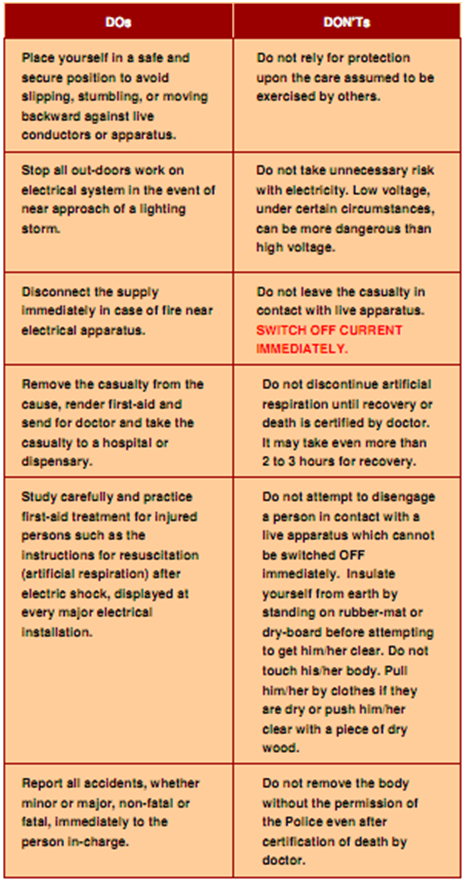Some Facts about Electric Shock
People suffer from electric shock while they touch an electrically charged object although in contact with another surface capable of conducting electricity to the ground. The current then flows through them. The severity of the shock depends on the amperage, duration of contact and resistance of the pathway by the body. For instance, damp skin is less resistant to current flow and permits greater current to flow by. For this purpose, you should work in a dry environment although handling electrical equipment. The seriousness of a shock also depends on the path the current takes by the body. For example, a little current passing by the heart is much more critical than current passing among two fingers of the same hand.
Testing for live current with one hand on the other hand of two decrease the risk of a dangerous shock through making current less likely to flow by the heart.
In a serious shock accident, the path in which the electric current takes by the body gets extremely hot. Burns occur all along that path, involving the places on the skin while the current enters and leaves the body.
People could feel electrical currents at levels as low as approximately 1 milliampere (mA) current that produces a slight tingling sensation. Increasing current levels above the 5 mA "let go" threshold could cause loss of muscular control, irregular heart rhythm and, at last, cardiac arrest. Five mA is only a little fraction of the current required to power a 60-watt bulb, which draws about 1/2 amp, or 500 mA. Electrocutions could occur even if actual contact is not made along with the line. The greater the line voltage, the farther electricity is able to "jump" to a ground conductor.
Personnel working in power utilities can safeguard themselves through following the practices described here.
Table: Preventing and Handling Electric shock

Some additional precautions are as follows:
1. Persons other than utility employees should not try to exchange street lights or set right service wires;
2. The nearest utility office should be informed if loose or hanging wires are noticed;
3. Take extra precautions while working in abnormally damp areas;
4. When, either accidentally or otherwise, live mains and apparatus constitute a danger to persons in a public place, a person should be detailed to stand-by and personally warn the public until the danger has been removed;
5. All portable electrical apparatus should be regularly tested, examined, and maintained to ensure in which the apparatus and leads are in good order;
6. All loose wiring, like as flexible cables for portable lamps, tools and trailing cables and other portable and transportable apparatus, should be inspected and tested regularly at often intervals to ensure safety;
7. While drilling bore wells it should be ensured in which the casing pipes do not touch live wires although they are being lifted up;
8. Unauthorized persons should not
- go near the distribution transformers;
- Attempt replacement of transformer fuses;
- Touch low lying or snapped conductors;
- lean against electric poles; and
- stand beneath overhead lines although heavy winds are blowing.